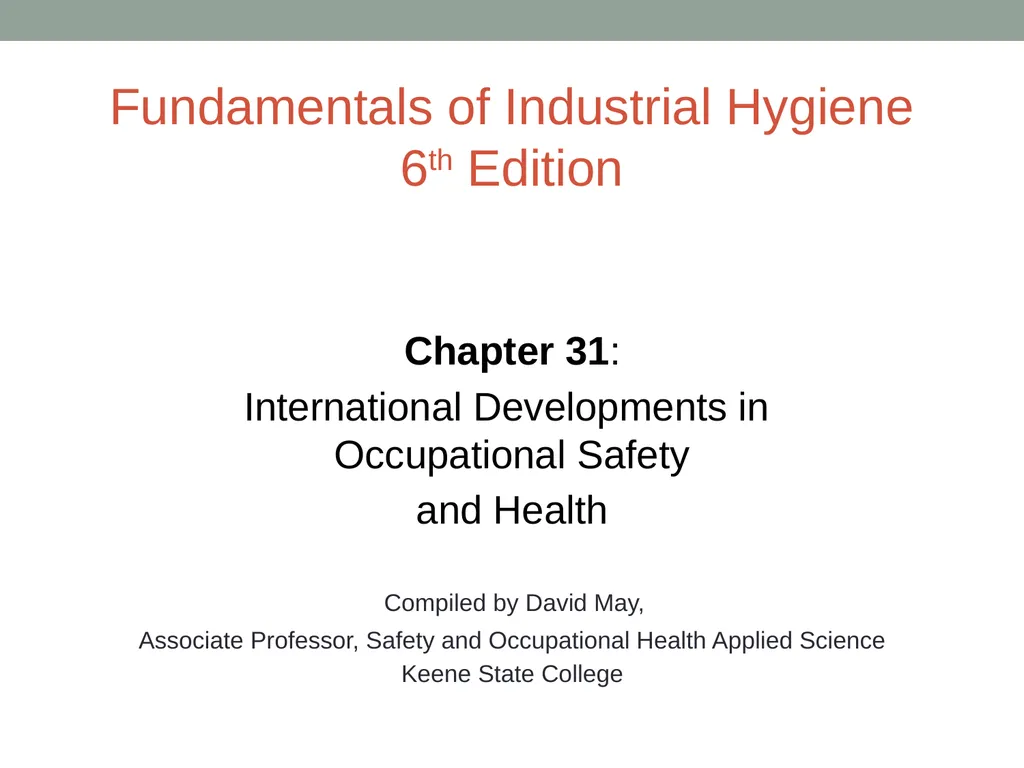
Fundamentals of Industrial Hygiene 6th Edition
Author: lindy-dunigan | Published: 2025-05-28
Description: Fundamentals of Industrial Hygiene 6th Edition Chapter 31: International Developments in Occupational Safety and Health Compiled by David May, Associate Professor, Safety and Occupational Health Applied Science Keene State College Globally
Download Presentation
Download the PPT/PDF: Download
Transcript:
Loading transcript…